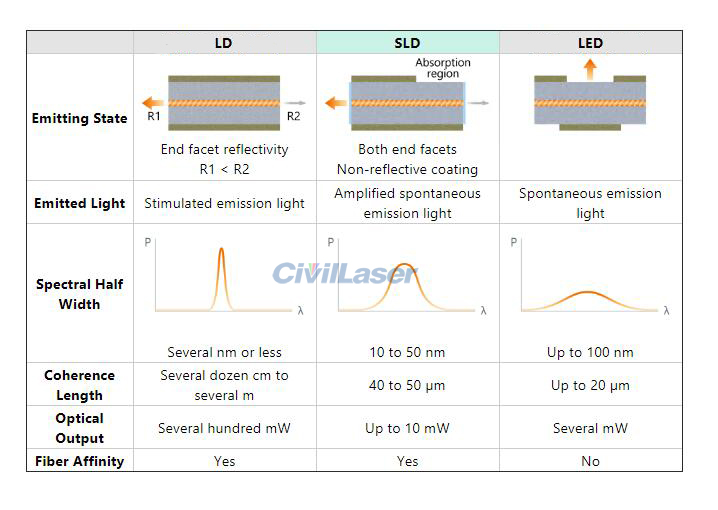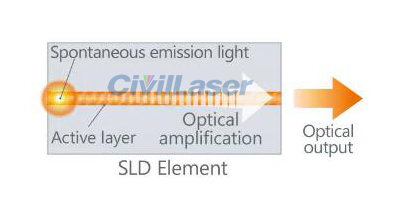SLD is an optical device that can provide output equivalent to LD (Laser Diode) and low coherence equivalent to LED (Light Emitting Diode), and has a wider spectral width. Because SLDs reduce coherent noise and achieve high-precision measurement, they can be used in a wide range of sensing fields, including photo application measurement and medical imaging.
Comparison of SLD and LD/LED characteristics
The following table provides the performance comparison of SLD and LD/LED.
SLD working principle
The working principle of SLD includes generating spontaneous emission light, then amplifying and outputting light with optical gain in the active layer. The figure below schematically illustrates this.
The spectral width of SLD is wider than that of stimulated emission light (such as LD light). However, since spontaneous emission light such as LED light is amplified by optical gain having a limited bandwidth, the spectral width of the SLD is narrower than that of the LED. As shown here, the spectral width of the SLD is between the spectral width of the LD and the LED. The figure below illustrates the SLD spectrum in the 800 nm range.
Advantages of using SLD
The advantage of using SLD is that its coherence is lower than that of LD light, which can reduce coherent noise. For example, if SLD is used for light interference measurement, it will reduce diffuse reflection (speckle noise) on the surface of the object to be measured.
Due to the spectral performance of a certain width, it is possible to obtain high resolution for interferometric measurement.
Since SLD has directivity like LD, it can focus light on optical fiber and send it over a long spatial distance. Therefore, a positional light source can be created at a location far away from the light source, which makes the sensor less susceptible to ambient temperature when performing sensing. Anritsu provides SLD cylindrical modules that have focused light in optical fibers, and SLD butterfly modules.





